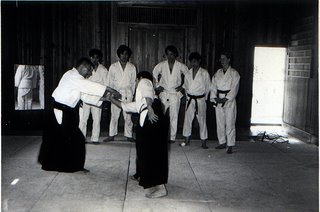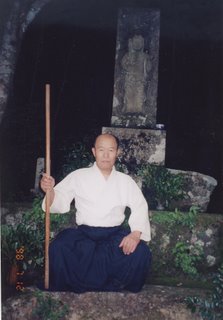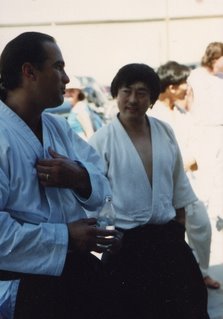aikido and alchemy/transformation

A couple of weeks ago a group of bay area aikido instructors met on a Sunday afternoon. There was an afternoon workshop about becoming a better teacher. We did not do a single aikido technique, although we did practice one movement/blend. Robert Nadeau(7th dan, City Aikido, Aikido of Mt. View, Aikido of San Jose) led the workshop, drawing upon his experience with Osensei in the 60's and his experience as a workshop leader(Esalen). It was very deep and experiential and, unfortunately, does not lend itself well to a linear process of information sharing.
The workshop does raise a number of very important questions. What is aikido past the techniques? What is aikido past the social experience of the dojo? What is aikido past the running of a dojo? What is aikido past the political networking? What do instructors need to do to keep growing and evolving?
Nadeau sensei once told me that he once told Osensei that he wanted to do Osensei's aikido. Osensei replied to him,"That's strange, no one else does. They want to do 'their' aikido." That was a real shocker to me. Exactly what it means to do Osensei's aikido as opposed to their/our aikido is probably not something that is easily grasped. To me doing Osensei's aikido is somehow honoring that aikido has a source(not simply the man Morihei Ueshiba or the techniques that are practiced) and to do the transformative work on oneself to align to that source. Osensei left us the shortcut in some sense, letting us know that that source is love. He once counselled Nadeau sensei to do the aikido that can't be seen with the human eye(katsu hayabi).
Anno sensei once told me that Osensei would talk about things and that at the present time he wished he had listened. Tojima sensei said that one morning class taught by Osensei was during a snowy winter day. There are slats at floor level in the Shingu dojo and Tojima sensei's toes were freezing from the snow falling through these slats as Osensei lectured about aikido at the universal level. Apparently Tojima sensei was making such a face that Osensei noticed."Are you bored? Let's do some chambara(literally the outer showy level of martial arts). ("Tsumaranai ka? Chambara shiyoo ka?" were the literal words. So even people who were very dedicated to him found his level of aikido very frustrating. Hikitsuchi sensei felt that the essence of Osensei's teachings and therefore the essence of aikido itself could not be grasped with out shugyo, an inner transformative process.
Possibly Osensei grasped that there was an inner code to the universe, and, grasping that code, that oneness with the universe would create a being like Osensei. Let us not forget that he dodged bullets, could make himself or an extension of himself like a staff immovable, and seemed to be able to do things with time and space, the building blocks of the physical universe.
I am including a new video. I am attempting to use the spiral movements of the staff that Osensei did to mix and align energies. In the production of the video I was very influenced by my experience at the workshop.







